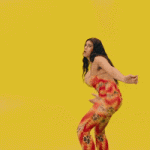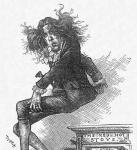Dionysus (or Bacchus, in the Latin rendering) is the Greek god of wine, drunkenness, fertility, insanity, religious ecstasy, festivity, and theater.
In his The Birth of Tragedy, Nietzsche describes the tension between the Apollonian and Dionysian ideals in art, religion, and culture. He refers, of course, to Dionysus, who represents pleasure, the uncontrollable, unpredictable chaos of nature, and femininity, and his counterpart, Apollo, who represents man-made structure, discipline, order, and masculinity.
Camille Paglia, building on Nietzsche’s dichotomy, asserts that Western culture is characterized by an attempt to reign in the Dionysian with Apollonian principles. Naturally, the Dionysian will always find a way to creep back in through the facade of Apollonian order.
I chose Dionysus as the mascot for Cracks in Pomo because the Enlightenment (Modern thought) has attempted to totally abolish the Dionysian principle, while Postmodernity can go in one of two directions: in its backlash against the constructs of modernity, it allows space for the Dionysian to remerge and will either affirm that human existence is situated in a constant tension between the two forces, or will attempt to codify (neutralize) the Dionysian under Apollonian pretenses.
Further, it is my assertion that the Incarnation, as it is understood by Catholic theology and is celebrated in Catholic liturgy and art, is the ideal integration of the tension between Apollo and Dionysus. Take saints like Anthony of Egypt, Augustine, Teresa of Avila, John of the Cross; artists like Baudelaire, Wilde, and Huysmans; Baroque architecture and Byzantine chant. It is in the incarnate deity and the legacy He has spawned that the tension between Apollo and Dionysus is coherently held together.













